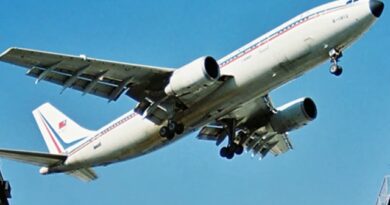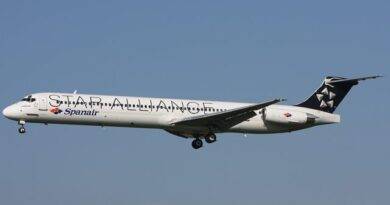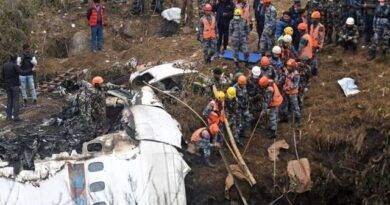12 November 1996 – Charkhi Dadri Mid-air Collision
Unfortunately, the history of aviation is full of fatal accidents. Let’s examine together one of these accidents, which resulted in the most deaths. As a result of this accident, a total of 349 people died in 1996 in over Charkhi Dadri, India.
Everything was proceeding normally at New Delhi Indira Gandhi International Airport on November 12, 1996. This was a very congested airport, and this congestion was the routine of this airport. It was around 6 a.m. local time. Flight 763 of Saudi Arabian Airlines took off. This aircraft was a B747-168B. At that time, there was another plane landing at this airport. This plane was an Ilyushin-76 of Kazakhstan Airlines. Normally this was a Soviet cargo plane. Then, the plane was modified and used as a passenger plane.

When everything was normal, suddenly a fireball appeared in the sky. Saudi and Kazakh jets collided in the air. Unfortunately, none of the 312 people on board the Saudi jet survived. The same was the case with the Kazakh jet. All 37 people on board died. Air traffic controllers in the control tower tried to make contact with the aircraft, but were unsuccessful. The planes collided with each other in mid-air.
How They Collided
After the accident, the teams immediately began to investigate. The planes had to be 300 meters apart while in the air. Black boxes were found and examined. The air traffic controller who controlled those two planes was questioned. The altitude information of the planes was not visible from the control tower. Air Traffic controllers could only learn altitudes from pilots. The investigating teams examined whether the controllers had made a mistake. The controllers had not made a mistake.
Why They Collided
The accident was investigated by the Lahoti Commission, headed by Ramesh Chandra Lahoti, then Delhi High Court judge. Statements were received from the Air Traffic Controllers Association and two airlines. Flight data recorders deciphered.
Let’s look in more detail.
Kazakhstan Airlines Flight 1907, an Ilyushin Il-76 departed Shymkent (aka Chimkent), Kazakhstan for a flight to Delhi. While descending on Airway G452 the crew contacted Delhi: “Good evening 1907. Passing through 230 for 180, 74 miles from DPN [the Delhi Airport beacon]”. The controller then cleared the flight to descend to and report at FL150. In the meantime, a Saudi Arabian Airlines Boeing 747 had departed Delhi at 18:32 for a passenger flight to Dhahran. Flight SV763 followed the Parvi SID and reported aproaching FL100. The Delhi controller cleared the flight, which was also on Airway G452, to climb to FL140. Because Flight 1907 was approaching from the opposite side, the controller told SV763: “Maintain level 140, Standby for higher.”
At this point, let’s summarize the situation. Two planes were flying towards each other on the same route. The air traffic controller instructed the IL-76 to descend to flight level 150. The controller also instructed the B747 to climb to flight level 140. As a result, the controller placed two planes 1000 feet apart on the same route.
A little later, Flight 1907 reported reaching FL150 at 46 miles from the airport. The controller then responded: “Roger. Maintain 150. Identified traffic 12 o’clock, reciprocal Saudia Boeing 747, 14 miles. Report in sight.” The Kazakhstan crew answered by querying the distance to which the controller answered: “Fourteen miles now, ro 1907.” When no reply followed he again warned: “Traffic in 13 miles, level 140.”
Apparently the Kazakh aircraft had descended below its assigned altitude and was flying at 14500 feet. A few seconds later the Ilyushin had descended another 310 feet. Shortly afterwards both aircraft collided, plummeted down in flames and crashed in an arid farming area.
1996 Charkhi Dadri – Causes of the Collision
The root and approximate cause of the collision was the unauthorised descending by the Kazakh aircraft to FL-140 and failure to maintain the assigned FL-150.
At the end of the accident, the reasons that caused the accident are as follows:
– Insufficient English knowledge of Kazakhstan airlines team. That’s why he doesn’t understand the ATC instructions correctly.
– Inadequate management skills of Pilot in Command. Lack of CRM – crew resource management.
– Lack of situational awareness of Kazakhstan Airlines flight crew. They do not fully understand the seriousness of my condition.
– Shortcomings of Kazakhstan airlines team in ATC – Pilot communication techniques.
Lessons to be Learned
Unfortunately, there are fatal accidents of this type in aviation history. But there are many lessons to be learned from every accident. Let’s take a rough look at the results from this accident. Aviation is an environment where all nations can meet in the air and have to agree with each other. For this reason, all aviation professionals must adequately know English which is the common language in aviation. In this regard, it should be aimed to reach the language proficiency levels determined by ICAO. Besides, pilot-ATC speaking techniques and procedures are extremely important. The complete implementation of these procedures is one of the most important factors that ensure safety in aviation. Finally, the technology With the development of technology, devices to increase safety in aviation have also become widespread. Having systems through which ATC could see the planes’ levels at the time of the accident would have prevented the accident.
Finally, even in the superficial evaluation we made above, we saw that there are more than one variable affecting the occurrence of the accident. Most incidents in aviation do not have just one cause. And when examining accidents, one should not look at them from a single perspective. In this regard, The “Swiss Cheese Model” developed by Prf. James Reason is an effective method for examining such events.
References:
https://aviation-safety.net/database/record.php?id=19961112-0&lang=fr
https://en.wikipedia.org/wiki/1996_Charkhi_Dadri_mid-air_collision


